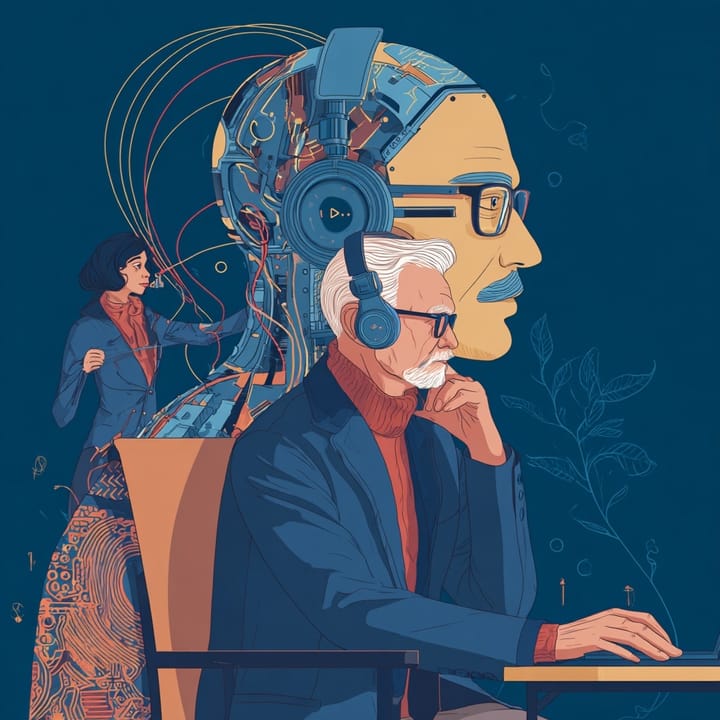Law Seven in Clinical AI Healthcare Excellence: Did I Drink My Own Kool-Aid?
There are times when we can become too close to our own AI technology, losing sight of the bigger picture. Practical steps clinicians can follow.

When Our AI Beliefs Outpace Patient-Centered Reality
In every healthcare AI project, there’s a quiet moment where belief turns into bias.
You’re proud of the model. You’ve seen the metrics. It’s fast, accurate, scalable, and maybe even “transformative.”
But then comes the hard question:
Have I fallen so in love with the solution that I’ve forgotten the problem it was meant to solve?
This is the final law of Clinical Healthcare AI Excellence:
A self-check for when conviction turns into tunnel vision.
Why This Law Exists
AI is seductive. It gives us the thrill of progress—the sense that we’re pushing the boundaries of what’s possible in care.
But unchecked enthusiasm can be dangerous. Especially in healthcare.
When we “drink our own Kool-Aid,” we risk:
- Misapplying AI tools in clinically inappropriate contexts
- Failing to detect unintended harm
- Ignoring patient feedback that doesn’t match our expectations
- Scaling a flawed solution across entire systems before it’s ready
And the consequences aren’t theoretical. They’re real—and they’re already happening.
The Clinical Cost of AI Overconfidence
Several high-profile failures illustrate the risks of AI solutions built in echo chambers:
A sepsis prediction model widely adopted in U.S. hospitals had significant false positive rates, leading to alarm fatigue, unnecessary interventions, and clinician frustration. A 2021 JAMA Internal Medicine study revealed it missed more than two-thirds of actual sepsis cases.
In oncology, an AI tool that flagged urgent imaging for cancer screening appeared promising, until researchers found racial bias in training data led to lower sensitivity for underserved populations.
A patient engagement chatbot rolled out in 2022 boasted high interaction rates, but patients reported increased confusion and lower satisfaction scores due to vague or inconsistent messaging.
These weren’t bad actors. They were well-intentioned teams who believed in their solution, too much.
And they show what happens when we don’t stop to ask: Is this actually helping? Or have we just gotten good at convincing ourselves it does?
AI in Healthcare Is a Clinical Intervention—Not a Product Launch
This law reframes AI not as a software rollout, but as a clinical intervention. And that changes everything.
If your AI causes confusion, delays, false confidence, or overdiagnosis, it’s no longer a tool—it’s a risk factor.
Drinking your own Kool-Aid might feel like innovation. However, in practice, it can erode trust, inflate expectations, and overshadow the patient voice.
The Litmus Test: Would I Want This Used on Me?
At the core of this law is a human filter:
Would I want this AI used in my care—or for someone I love, under real-world conditions?
Not in a demo. Not in a slide deck.
But in a hospital hallway, at 3:00 AM, when minutes matter and context is everything.
If that question makes you hesitate, then your solution isn’t ready. And that’s okay—as long as you’re willing to keep listening and learning.
Revisiting the Previous Six Laws Before
To live out this final law, you need the foundation of the first six:
- Establish Multidisciplinary AI QA Teams
- Data Integrity & Clinical Validation Protocols
- Patients First
- Is It a Problem Worth Solving?
- Always Be Iterating
- Failure Is Not a Bad Word
The Real Danger: Losing Touch with Reality
If we ignore Law #7, we risk building a healthcare future that’s shiny, fast, and hollow.
A future where:
- AI tools perform brilliantly in pilot studies but flounder in diverse populations.
- Providers become “button-clickers” instead of decision-makers.
- Patients are reduced to datapoints instead of people.
And most dangerously: we mistake our faith in AI for evidence.
To be candid, if this article doesn’t stir some inner reflection about the why behind the what, then it might be time to push your AI innovation a little harder. And if you’re already pushing the envelope, let this be your anchor point, a gut check, a moment to pause and recalibrate.
This law is about humility. It’s about discipline. And it’s about remembering that in healthcare, our first responsibility isn’t to the algorithm—it’s to the patient.
Final Reflection
Clinical excellence in AI isn’t measured by how advanced the model is.
It’s measured by how much better care becomes—safer, kinder, more equitable—because of it.
And if we lose sight of that, then yes—we drank the Kool-Aid. And patients may pay the price.
So pause. Breathe. Recalibrate.
Because the future of AI in healthcare doesn’t need more hype.


